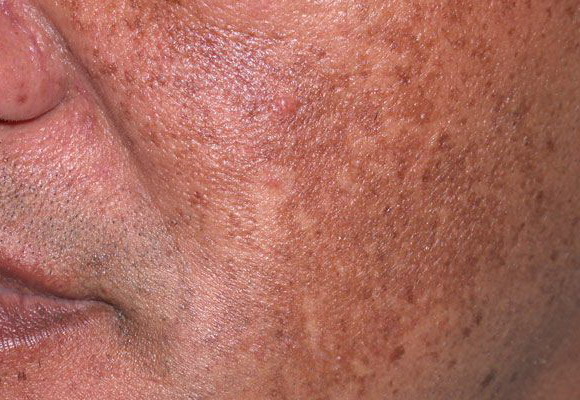What is Chloasma and definition

Chloasma is a pattern of hyperpigmentation, often temporary, that typically affects the face. Chloasma, also called melasma, develops with elevated blood levels of ESTROGENS, such as occurs during PREGNANCY, with some oral contraceptive (birth control pill) formulations, and in chronic LIVER disease. When the cause is hormonal, the hyperpigmentation fades when HORMONE levels return to normal. Chloasma may also develop in men or women who have liver conditions such as CIRRHOSIS or HEPATITIS. The melanocytes (melaninproducing cells) in the affected areas of skin overproduce melanin, the pigment that gives SKIN its color. The hyperpigmented areas have clearly defined borders and often appear in symmetry, resulting in a masklike appearance.
Chloasma Treatment
The doctor diagnoses chloasma on the basis of its appearance and correlation with factors such as pregnancy or liver disease. Topical solutions such as hydroquinone and tretinoin (Retin-A) help fade the chloasma in some people, though pregnant women should not use these treatments. Both medications have potentially serious side effects and are for short-term use only (eight weeks or less). As sun exposure intensifies melanin production, dermatologists recommend wearing sunscreen (sun protection factor [SPF] 30 or greater) and shading exposed areas of skin from the sun as much as possible. Chloasma is primarily cosmetic and does not present a threat to health other than that of any underlying condition. Most chloasma resolves on its own when the underlying cause health condition changes.
See also MELANOCYTE; ROSACEA; SUN PROTECTION.